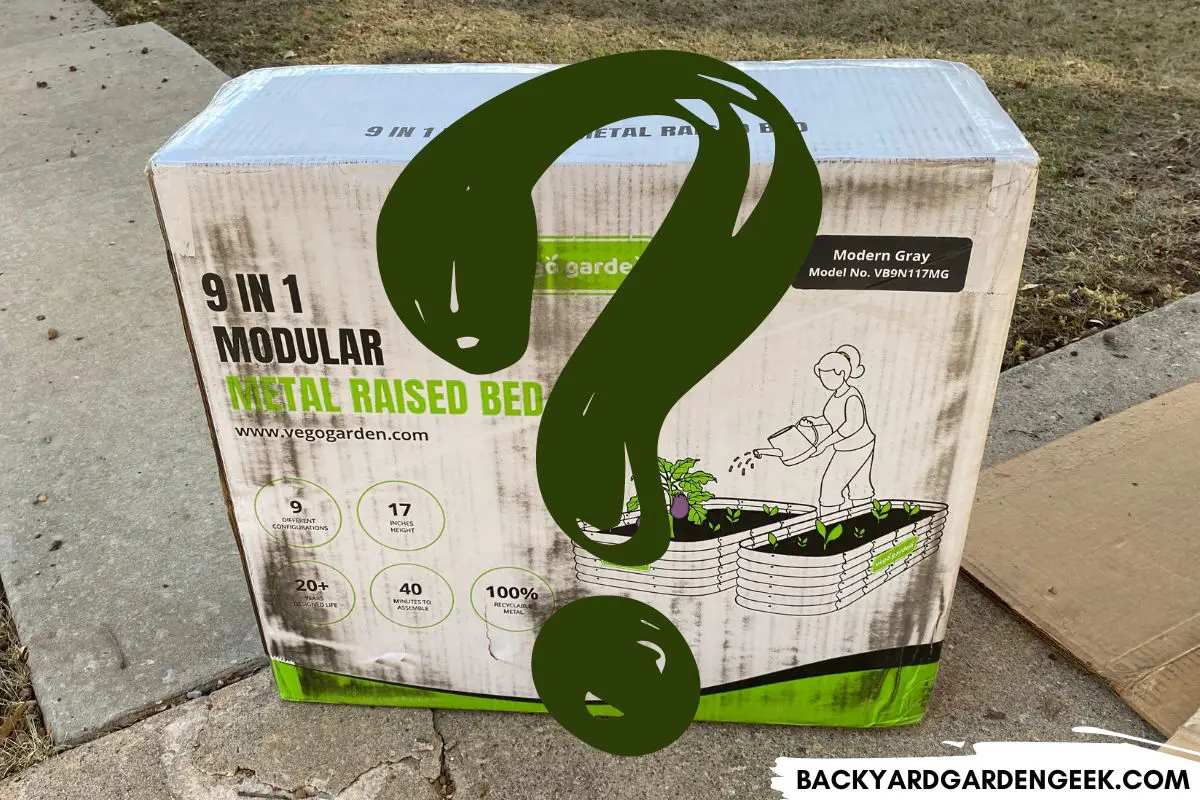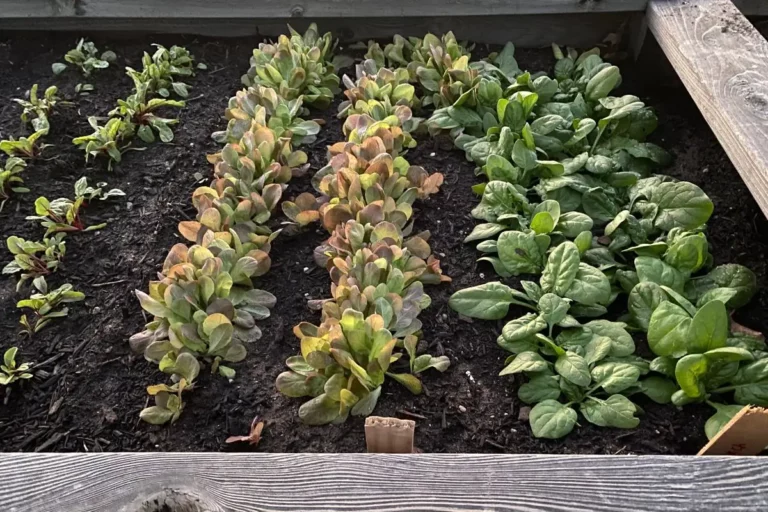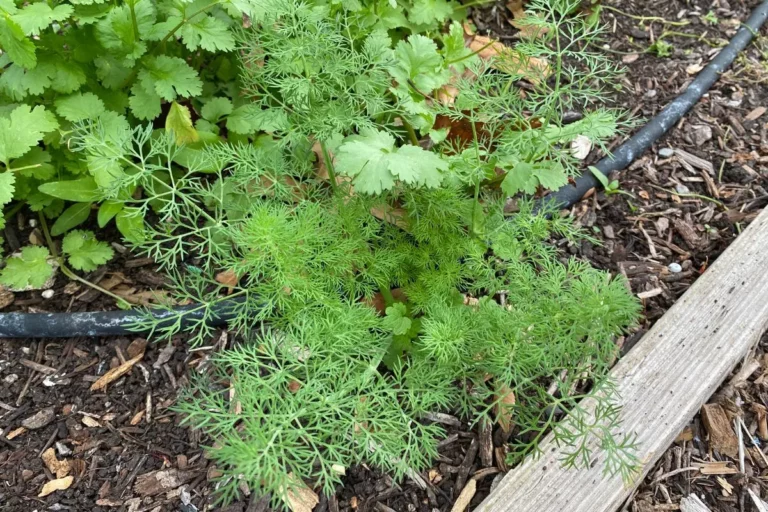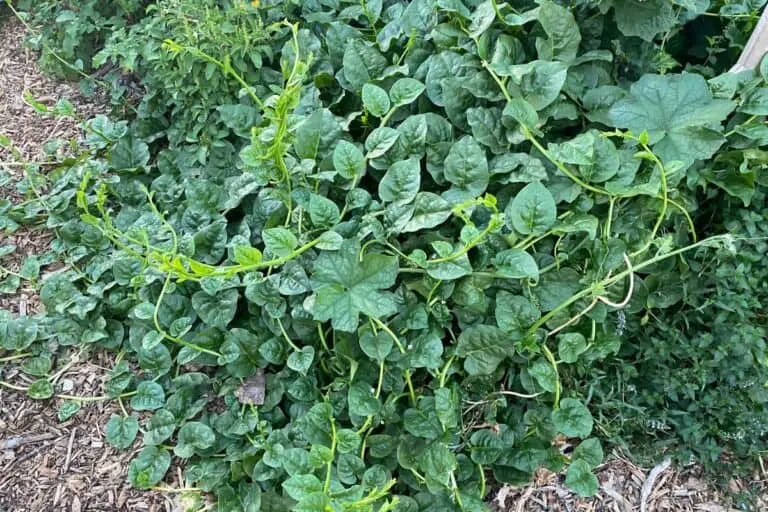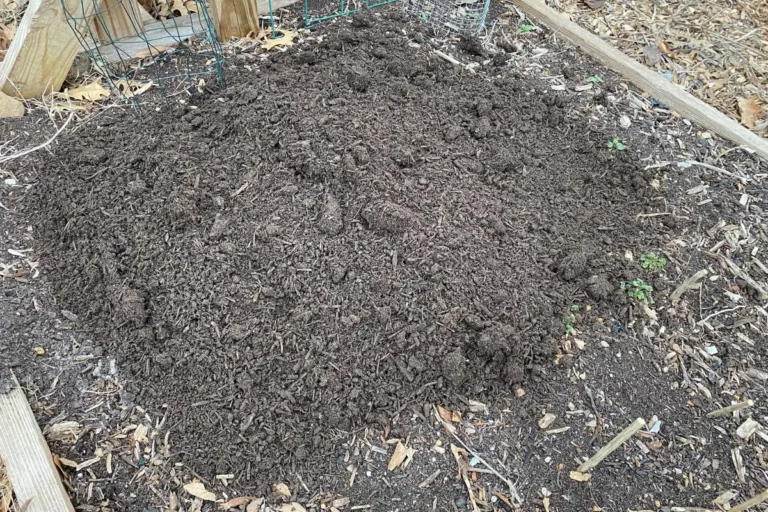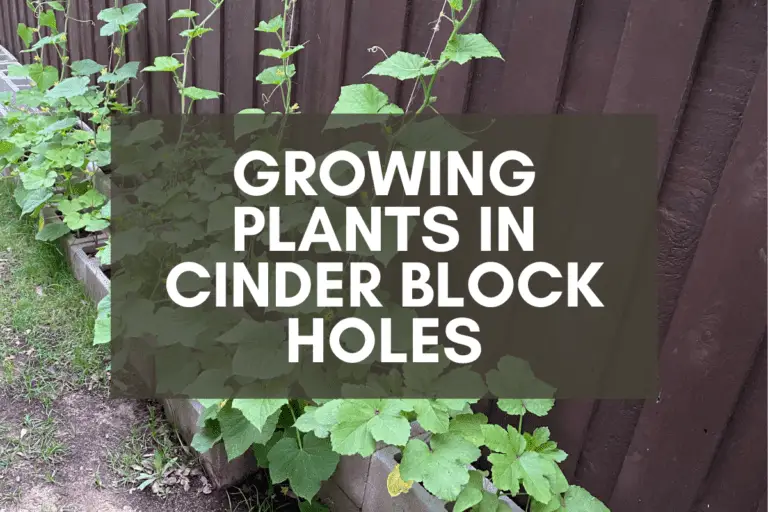Landscape Fabric Under Raised Beds: Is It Necessary?
I can’t tell you how many blog posts and YouTube videos I’ve seen that suggest it’s a good idea to put landscape fabric under raised garden beds.
I understand the arguments in favor of doing so, but I’ve been gardening for over a decade, and it’s a mistake to do so. Here’s why:
Landscape fabric can be placed underneath raised garden beds, but it’s often a mistake to do so since the fabric will prevent earthworms and other beneficial organisms from migrating into the raised bed’s soil. In shorter beds, fabric will also hinder the development of full, healthy root systems.
Just to be clear, you can grow lots of plants in raised beds that have landscape fabric underneath them.
You just won’t get the full benefits you would have gotten had you placed other materials underneath your raised garden beds.
Landscape fabric can be a little controversial among gardeners, so I’d like to do 2 things in this article:
- explain the arguments in favor of landscape fabric and why I disagree with those who promote the practice.
- provide alternative weed control methods and why skipping landscape fabric will lead to better, healthier soil in your raised beds.
So whether you’re in favor of landscape fabric or against it (or just researching it for the first time), keep reading to learn more about my experiences using landscape fabric on my property and installing raised garden beds.

Should I Use Landscape Fabric in My Garden?
Proponents of putting landscape fabric underneath raised beds cite one major reason for doing so: weed control.
And they have a point.
There are countless weed seeds in the soil around your property (tens of thousands? maybe many more?), and landscape fabric is excellent at keeping those seeds from ever seeing the light of day.
So far, so good, right?
There’s another reason why landscape fabric is often recommended. If you’re putting raised beds on top of grass, landscape fabric will smother the grass just like it smothers the weed seeds.
This is especially helpful if your yard is covered in rhizomatic grass like Bermuda, which means that it can spread either by aboveground grass (called stolons) or those pieces that are underneath the ground (called rhizomes).
Landscape fabric can help keep grasses away from your beds as long as you put down enough of it so that it surrounds the area around the beds.
In fact, if you’re building raised beds in your backyard, I highly recommend putting landscape fabric down in the walking areas between the beds, then covering that fabric in several inches of mulch.
Bermuda grass can still sneak in because it’s nearly impossible to kill off entirely, but you won’t have nearly as many problems with it if you put landscape fabric down.
So just to repeat, there are 2 reasons why landscape fabric is recommended by some people:
- It kills off weeds and keeps weed seeds from sprouting.
- It kills off grass and often keeps unwanted grasses from creeping into the garden.
Unfortunately, these upsides aren’t enough to make up for the downsides that come with using landscape fabric underneath raised beds. These include:
- creating a non-biodegradable barrier between native soil and raised beds
- preventing beneficial organisms
- inhibiting proper plant growth
- interfering with natural decomposition processes
- compacting the native soil
- disrupting proper water drainage
To help you understand the downsides of putting landscape fabric underneath raised beds, let’s take a closer look at each of these.
1. Creating a Non-Biodegradable Barrier
When you put down landscape fabric, you’re putting down a barrier that’s specifically designed to not biodegrade.
If you’re building mulched beds around your house that are designed for perennials or annuals–beds that you won’t be planting any garden plants in or really disturbing all that much in the years to come–then I think landscape fabric is fine as long as you’ve thought carefully about how water will run off your lawn.
I did a big home renovation project back when I lived in New Jersey, transforming a yard that was basically one big lots of weeds into something beautiful that my kids could run and play in.
We built mulched beds around the edges of the year for aesthetic reasons–and to control the water runoff that was coming into our yard from our neighbor’s yard–and for these beds, I put down landscape fabric.
I then cut out holes in the fabric and planted perennials in those holes, then covered everything with mulch. Those beds did exactly what I wanted them to do, and I never had to weed them, which was great.
But if you’re thinking about putting landscape fabric underneath your raised beds, I’d encourage you to think again.

2. Preventing Beneficial Organisms
The biggest reason to not put down landscape barriers under your gardens has to do with soil health.
Put simply, you want the soil in your raised beds to come into direct contact with the soil underneath your raised beds. That way, earthworms, pill bugs, and all kinds of beneficial microorganisms will eventually find their way into your raised beds from the soil beneath them.
When you put down a landscape barrier, you make this impossible. And since earthworms and pill bugs are like tiny little composters and miniature tillers, you’ll have to add them yourself since they won’t be able to get in any other way.
When you don’t put down such a barrier, you’re going to see all kinds of life in your soil within 8-10 months of building your raised garden bed.
That life is a sign that you’re on your way to having a healthy soil for your plants, so don’t do anything to make that process impossible, including putting down landscape fabric.
3. Inhibiting Proper Plant Growth
When it comes to plants, some of them grow just fine in shallow areas because they’re short-rooted plants.
This includes most herbs, lots of leafy greens, and plenty of other plants.
But other garden varieties require much more soil to grow since their roots will stretch deep down to gather as many nutrients from the soil as possible.
You’ll see this with eggplant, melons, okra, peppers, various squash varieties, tomatoes, and plenty of other, larger plants.
If you’re building or installing 6-inch, 12-inch, or even 17-inch raised beds and then putting landscape fabric underneath it, you’re not going to be able to plant any of the larger plants in those beds, although the 17-inch varieties will give you much more flexibility than the smaller ones.
I mean, you can try to plant large plants in the smaller raised beds, but they’ll never develop the root systems they need to produce as big a harvest as they would have otherwise produced.
When it comes to beds that are much larger–such as those offered by Birdies (30 inches tall) or Vego Garden (32 inches tall)–this is less of a problem since there’s so much space to grow in.
But you’ll find that there are other problems because you shouldn’t grow some plants in raised beds (such as melons, okra, winter squash, and tomatoes) unless you enjoy dragging a ladder out to your garden when those plants grow taller.
I made that mistake once, and it was a huge headache.
If you’re installing larger raised beds, you’ll want to grow smaller plant varieties in them so you don’t overwhelm yourself.
If you’re installing smaller raised beds, you can grow most plants in them as long as you don’t put down a permanent barrier underneath them.

4. Interfering with Natural Decomposition Processes
Another reason that landscape fabric can cause problems is that it interferes with nature’s normal decomposition processes.
As I’ve noted in an article on why vegetables can grow better in raised beds, your garden will benefit from the decomposition that takes place as compostable materials fall to the soil and decompose, aided by the bugs that are crawling throughout your raised beds.
If you stop the beds, you interfere with the decomposition process.
This is especially important if you’re interested in hugelkultur, the Back to Eden (BTE) method, or successful in-ground gardening:
- Hugelkulture: This is where you pile compostable materials on top of each other. As they decompose, you can garden directly in the soil that results.
- BTE Gardening: Popularized by Paul Gautschi, BTE gardening mimics nature in that you pile tons of wood chips (specifically those produced by tree-cutting companies) on top of each other, allowing them to decompose over time. As they do, the soil beneath is perfect for planting.
- In-Ground Gardening: When gardening in your native soil, your plants will do best if you can pile mulch, wood chips, and other compostable materials around your beds, keeping the soil from drying out too quickly.
In each of these instances, your garden will be better off if the layers of soil and yard debris are allowed to decompose into beautiful, nutrient-rich soil.
When I install new raised beds, I always practice a form of hugelkultur, since I want to fill the bottom of the raised beds with materials that will decompose into rich, healthy soil.
But hugelkultur doesn’t work as well if native bugs can’t get in there to help with the decomposition process.
So save the landscape fabric for your walkways and let the soil in your raised beds do what it wants to do.
5. Compacting the Native Soil
Another issue with landscape fabric is that it hinders the native soil from having proper contact with sunlight, moisture, and yard debris.
Over time, the soil and its microorganisms have no way to connect with the soil that’s placed atop the landscape fabric.
This means that the native soil will grow more compact over time since there’s nothing that’s allowing it to interact with other soil layers.
This isn’t a problem if you’re building garden walkways and covering them in mulch or wood chips or if you’re building permanent raised beds for perennial or annual plants.
But if you’re interested in raised bed gardening, you won’t want compact soil. You want soil that’s rich and teeming with life so that your plants’ root systems can grow deep and pull all kinds of nutrients from the ground.
6. Disrupting Proper Water Drainage
One of the reasons that people build raised beds is because they typically have good water drainage.
Water drainage is key for 2 reasons:
First, you want the soil in your raised beds to be neither too dry nor too wet. When you build raised beds, you can fill them with at least 40 kinds of compostable materials, creating beds that’ll have rich, properly draining soil.
Second, you want to consider water drainage because rain can cause all kinds of water runoff problems, especially if you live in urban or suburban areas.
In New Jersey, I had to put in a french drain next to a raised garden bed because I hadn’t realized that that bed would cause a problems for the drainage on my lawn.
It wasn’t a huge deal, but I could have avoided that headache if I had planned ahead and given more thought to water drainage.
And this is where landscape fabric comes to mind. Landscape fabric is porous (of course), but it can cause water drainage and runoff problems during heavy thunderstorms and lots of rain since the soil beneath won’t have a chance to absorb as much water as it might have otherwise done.
As long as you consider this problem, you can lay down landscape fabric under walkways and permanent beds without a problem, but I’d keep it away from my raised beds because I want those beds to absorb, retain, and then release water in as natural a way as possible so that the plants get what they need from the rain.
If you’d like to read about what I use instead of landscape fabric, please check out these articles:
- Full Sun or Partial Shade: What’s Best for Raised Beds?
- Should You Remove Grass Under Raised Beds?
- Top 10 Reasons Why Concrete Blocks Are Good for Raised Garden Beds
But here’s the key: Use cardboard. Lots and lots and lots of cardboard.
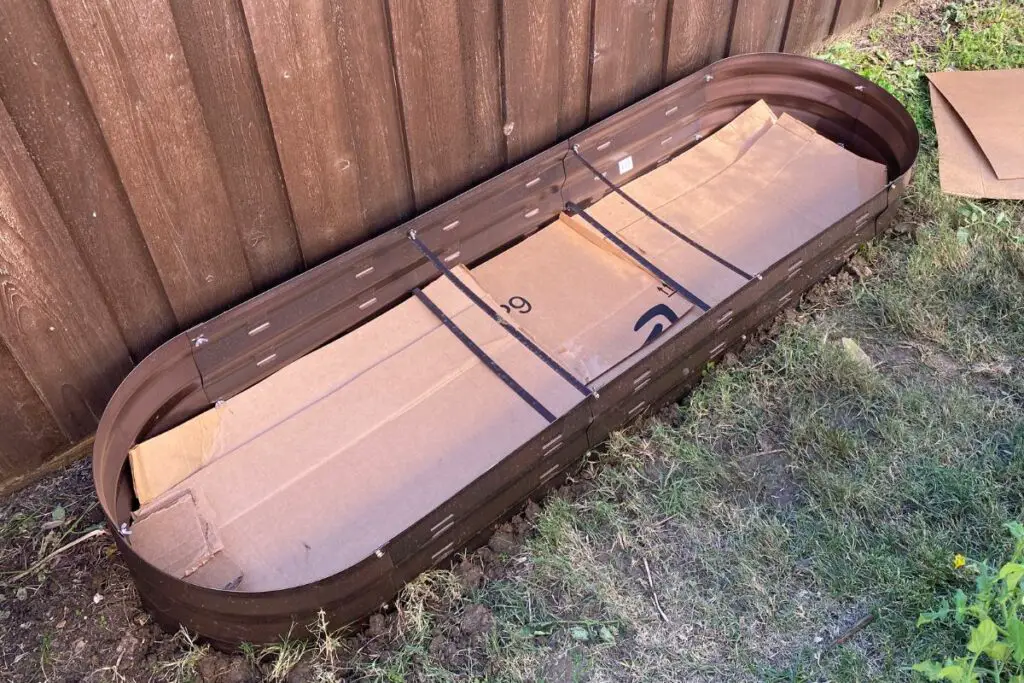
If you put down very thick layers of cardboard, then cover them with compostable materials, you’ll kill off native grass and weeds and inhibit weed seeds.
Most importantly, that cardboard will break down over time. It’ll provide your beds with some nutrients in the process, but it’ll no longer block the organisms in your soil or your plants’ roots. That’ll result in healthier garden soil over time.
Is Landscaping Fabric Safe for Vegetable Gardens?
So now that we’ve covered all of the reasons why I generally avoid landscape fabric, let’s talk about one final question: Is landscape fabric safe for your vegetables?
Obviously, you don’t want to be putting plastic beneath your raised beds since plastic will deteriorate over long periods of time, and you don’t want that in your garden beds.
But what about landscape fabric? Is it safe for vegetable gardens?
Landscape fabric is safe to use in or around gardens since it won’t decompose or leach chemicals into the ground. But landscape fabric should only be used beneath walkways. If placed beneath raised beds, it’ll keep earthworms and other beneficial organisms from migrating into and improving the soil.
This is why I think landscape fabric is fine for walkways and areas where you’ll be planting ornamental perennials or annuals.

In those areas, you don’t want grass or weeds popping up, and you won’t be growing any plants there that you plan to eat.
And if you want to grow non-edible plants in those areas, you simply cut a hole out of the fabric, put the plant in the ground, then cover everything with mulch.
Simply put, I’m not anti-landscape fabric. I’m just against using it in ways that’ll interfere with your garden’s natural processes. Let nature run its course in your garden, and your plants will thank you for it!
Want to Learn More?
If you’d like to learn more about raised beds, I’d recommend taking a look at these related articles:
